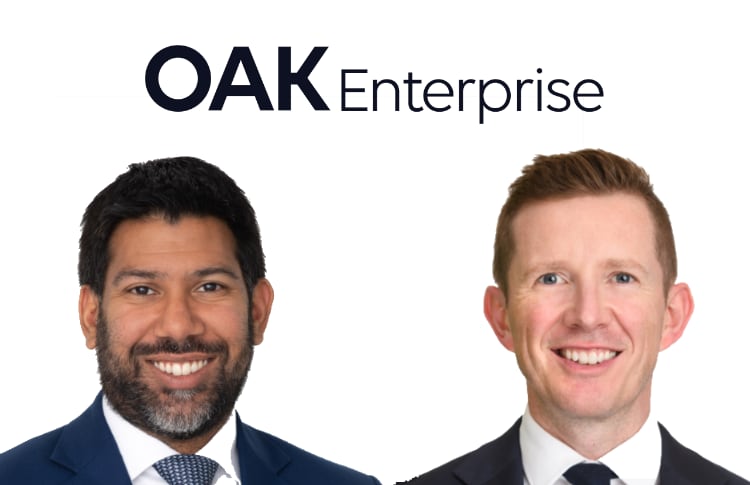
Reflecting on the substantial growth that’s been seen across the insurance-linked securities (ILS) market over the last few years, Gareth Abley, Co-Head of Alternative Strategies at MLC Asset Management maintains his belief that the space remains “really attractive” today.Speaking with Global Investment Institute, Abley discussed several topics related to ILS, such as the market’s current attractiveness, as well as what he considers to be key strategies for gaining successful exposure across the space.In terms of how Abley would rank the attractiveness of the ILS market today, the industry veteran said: “It’s been a fun 17 years.So, it’s an interesting kind of juncture.
I think we started researching the space in 2005 and for those with long memories, 2005 was a year of big hurricanes in the US, and Hurricane Katrina, which many people will know of, hit New Orleans.“There were also two other fairly material hurricanes in 2005, so spreads widened significantly as people reprice the risk of hurricanes,” Abley told Global Investment Institute.He continued: “Now we were lucky we invested in 2007 because we saw that spread widening to really attractive levels, and I think I remember 2017 the yield on our portfolios were, call it 15%.
Now, we had probably 10 years after 2007 where there was very little natural catastrophe activity that impacted the industry in the space of ILS.So, spreads gradually kind of cranked down, and we still made money every year, but they were kind of lower.“Then there was this essentially big change from 2017 to 2024 where in most of those years we’ve had more than $100 billion of annual industry losses.
Now that was from a starting point of low spreads, or lower spreads in 2017, so we have a more remote risk portfolio.We still made money above cash every year, 2017 to 2024, but a lot of people unfortunately didn’t, because they were maybe taking more risk.“But if you fast forward to 2023, you’ve had a number of years of these much heavier, more painful losses, a lot of capital exiting the space, climate change looking in the background, as a reason for people to stop allocating or deallocate,” Abley explained.
Abley also highlighted how in 2022 reinsurers experienced significant losses on the asset side of their balance sheets due to rising bond yields, as they typically invest in fixed-income portfolios using leverage.These asset losses were compounded by catastrophe losses, and as a result, by 2023, credit spreads had widened significantly, reaching levels not seen in the past 17 years, which ultimately made them attractive for investors.“They’ve come in a little bit over the last two years, but still really attractive.
So, 2023 was a 10 out of 10.It’s kind of an eight and a half out of 10 today,” Abley added.Furthermore, Abley also outlined what he considers the key strategies for achieving successful exposure in the insurance-linked securities market “I think having the flexibility to invest in both public and private reinsurance is helpful, given the relative value changes through time,” he said.
“I think our view is it’s better to play in more remote risk perils.So, that means things that are only impact evoked by really big events.So, there’s two reasons for that.
One, there’s economic reasons why those perils pay higher return per unit of risk, a higher multiple, and have done for a long period of time.“The second is more subtle, which is that it’s easier for stakeholders, investors, to stay the course in the asset class if they’re not losing money on a regular basis, which can happen in higher risk strategies.” “I think unfortunately a lot of investors kind of exited or got stopped out of the asset class because they potentially took more risk, suffered losses, stakeholders lost the faith, and that meant they weren’t there in 2023 when spreads were super wide.So, I think our biases remote risk makes sense.” For his third and final recommendation, Abley highlighted the importance of having a multi manager approach.
“ is we looked at 15 different ILS managers, all taking ostensibly similar levels of risk, and we track their returns each year, between 2017 to the end of 2023 which is quite a high loss year, which kind of pulls the curtain back on what’s in the portfolio, and that can create more managed dispersion,” Abley explained.“The average difference between the best and the worst manager seven years was 15%, so huge manager dispersion, and we regard that as essentially unpredictable.So, it’s driven a lot by luck, and it’s driven a lot by things under the bonnet that are very subtle, that intersect in different ways that are quite hard to work out.
“Our conclusion is if you want to capture the risk premium reliably with as much certainty as possible, multi manager is definitely a much more risk return efficient way to do it,” Abley concluded..All of our Artemis Live insurance-linked securities (ILS), catastrophe bonds and reinsurance can be accessed online.Our can be subscribed to using the typical podcast services providers, including Apple, Google, Spotify and more.
Publisher: Artemis








